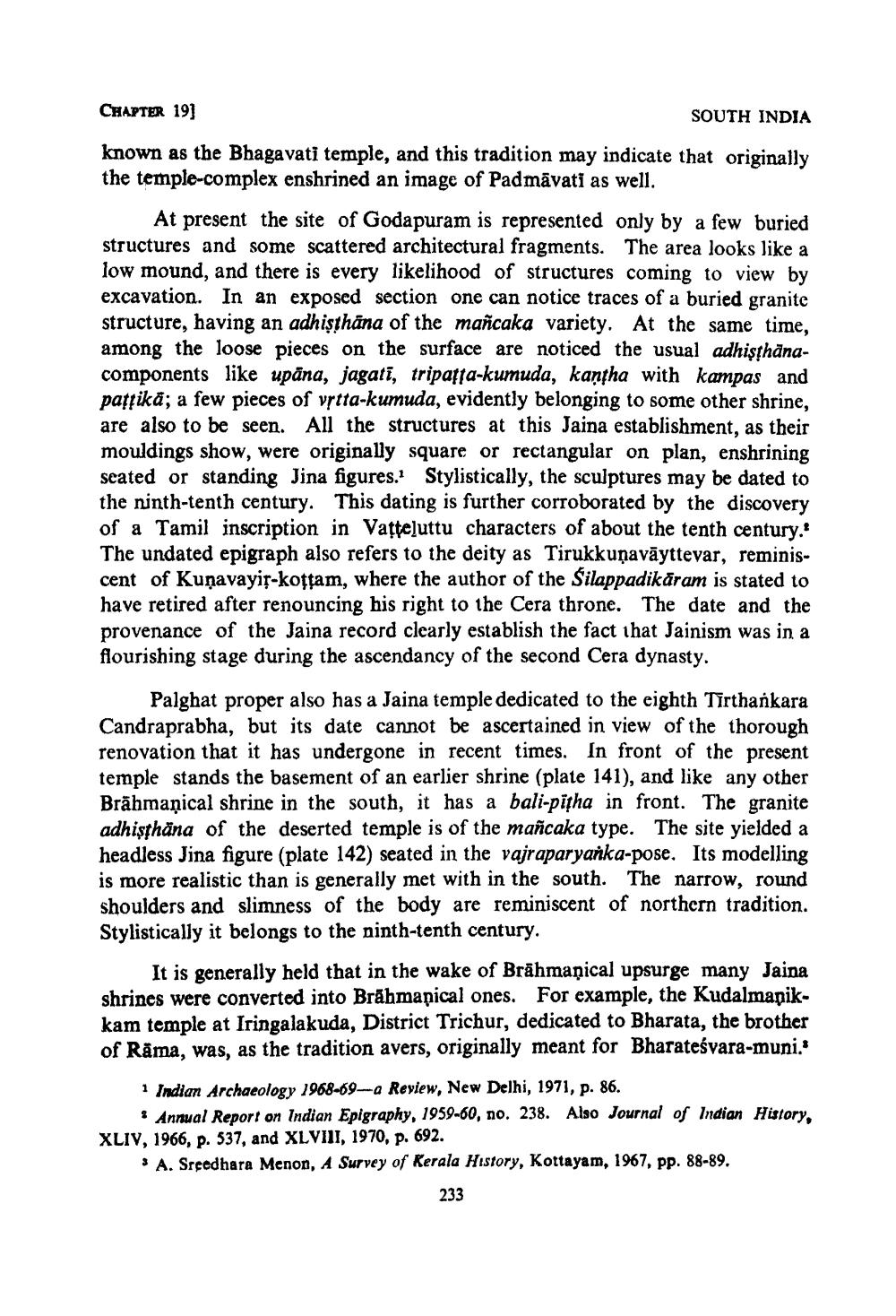________________
CHAPTER 19)
SOUTH INDIA
known as the Bhagavati temple, and this tradition may indicate that originally the temple-complex enshrined an image of Padmāvati as well.
At present the site of Godapuram is represented only by a few buried structures and some scattered architectural fragments. The area looks like a low mound, and there is every likelihood of structures coming to view by excavation. In an exposed section one can notice traces of a buried granite structure, having an adhişthāna of the mañcaka variety. At the same time, among the loose pieces on the surface are noticed the usual adhisthanacomponents like upāna, jagati, tripaffa-kumuda, kantha with kampas and pațfikā; a few pieces of vstta-kumuda, evidently belonging to some other shrine, are also to be seen. All the structures at this Jaina establishment, as their mouldings show, were originally square or rectangular on plan, enshrining seated or standing Jina figures. Stylistically, the sculptures may be dated to the ninth-tenth century. This dating is further corroborated by the discovery of a Tamil inscription in Vatteluttu characters of about the tenth century. The undated epigraph also refers to the deity as Tirukkuņavāyttevar, reminiscent of Kunavayir-kottam, where the author of the Silappadikāram is stated to have retired after renouncing his right to the Cera throne. The date and the provenance of the Jaina record clearly establish the fact that Jainism was in a flourishing stage during the ascendancy of the second Cera dynasty.
Palghat proper also has a Jaina temple dedicated to the eighth Tirthankara Candraprabha, but its date cannot be ascertained in view of the thorough renovation that it has undergone in recent times. In front of the present temple stands the basement of an earlier shrine (plate 141), and like any other Brāhmaṇical shrine in the south, it has a bali-pipha in front. The granite adhisthäna of the deserted temple is of the mañcaka type. The site yielded a headless Jina figure (plate 142) seated in the vajraparyanka-pose. Its modelling is more realistic than is generally met with in the south. The narrow, round shoulders and slimness of the body are reminiscent of northern tradition. Stylistically it belongs to the ninth-tenth century.
It is generally held that in the wake of Brāhmaṇical upsurge many Jaina shrines were converted into Brāhmapical ones. For example, the Kudalmanikkam temple at Iringalakuda, District Trichur, dedicated to Bharata, the brother of Rāma, was, as the tradition avers, originally meant for Bharateśvara-muni.
1 Indian Archaeology 1968-69-a Review, New Delhi, 1971, p. 86.
. Annual Report on Indian Epigraphy, 1959-60, no. 238. Also Journal of Indian History, XLIV, 1966, p. 537, and XLVIII, 1970, p. 692. * A. Sreedhara Menon, A Survey of Kerala History, Kottayam, 1967, pp. 88-89.
233




